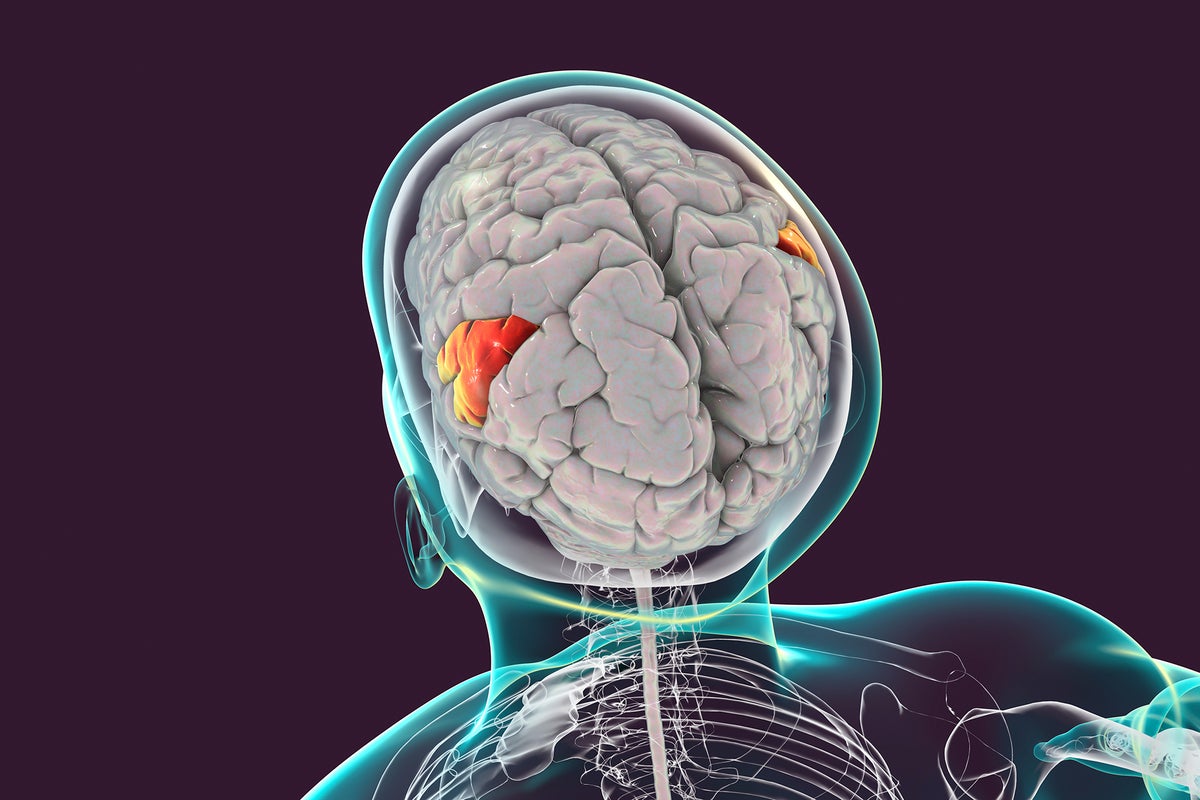Scientists have developed brain implants that can decode internal speech — identifying words that two people spoke in their minds without moving their lips or making a sound.
Although the technology is at an early stage — it was shown to work with only a handful of words, and not phrases or sentences — it could have clinical applications in future.
Similar brain–computer interface (BCI) devices, which translate signals in the brain into text, have reached speeds of 62–78 words per minute for some people. But these technologies were trained to interpret speech that is at least partly vocalized or mimed.
The latest study — published in Nature Human Behaviour on 13 May — is the first to decode words spoken entirely internally, by recording signals from individual neurons in the brain in real time.
[…]
The researchers implanted arrays of tiny electrodes in the brains of two people with spinal-cord injuries. They placed the devices in the supramarginal gyrus (SMG), a region of the brain that had not been previously explored in speech-decoding BCIs.
Figuring out the best places in the brain to implant BCIs is one of the key challenges for decoding internal speech
[…]
wo weeks after the participants were implanted with microelectrode arrays in their left SMG, the researchers began collecting data. They trained the BCI on six words (battlefield, cowboy, python, spoon, swimming and telephone) and two meaningless pseudowords (nifzig and bindip). “The point here was to see if meaning was necessary for representation,” says Wandelt.
Over three days, the team asked each participant to imagine speaking the words shown on a screen and repeated this process several times for each word. The BCI then combined measurements of the participants’ brain activity with a computer model to predict their internal speech in real time.
For the first participant, the BCI captured distinct neural signals for all of the words and was able to identify them with 79% accuracy. But the decoding accuracy was only 23% for the second participant, who showed preferential representation for ‘spoon’ and ‘swimming’ and had fewer neurons that were uniquely active for each word. “It’s possible that different sub-areas in the supramarginal gyrus are more, or less, involved in the process,” says Wandelt.
Christian Herff, a computational neuroscientist at Maastricht University in the Netherlands, thinks these results might highlight the different ways in which people process internal speech. “Previous studies showed that there are different abilities in performing the imagined task and also different BCI control abilities,” adds Marchesotti.
The authors also found that 82–85% of neurons that were active during internal speech were also active when the participants vocalized the words. But some neurons were active only during internal speech, or responded differently to specific words in the different tasks.
[…]
Source: Device Decodes ‘Internal Speech’ in the Brain | Scientific American

Robin Edgar
Organisational Structures | Technology and Science | Military, IT and Lifestyle consultancy | Social, Broadcast & Cross Media | Flying aircraft

